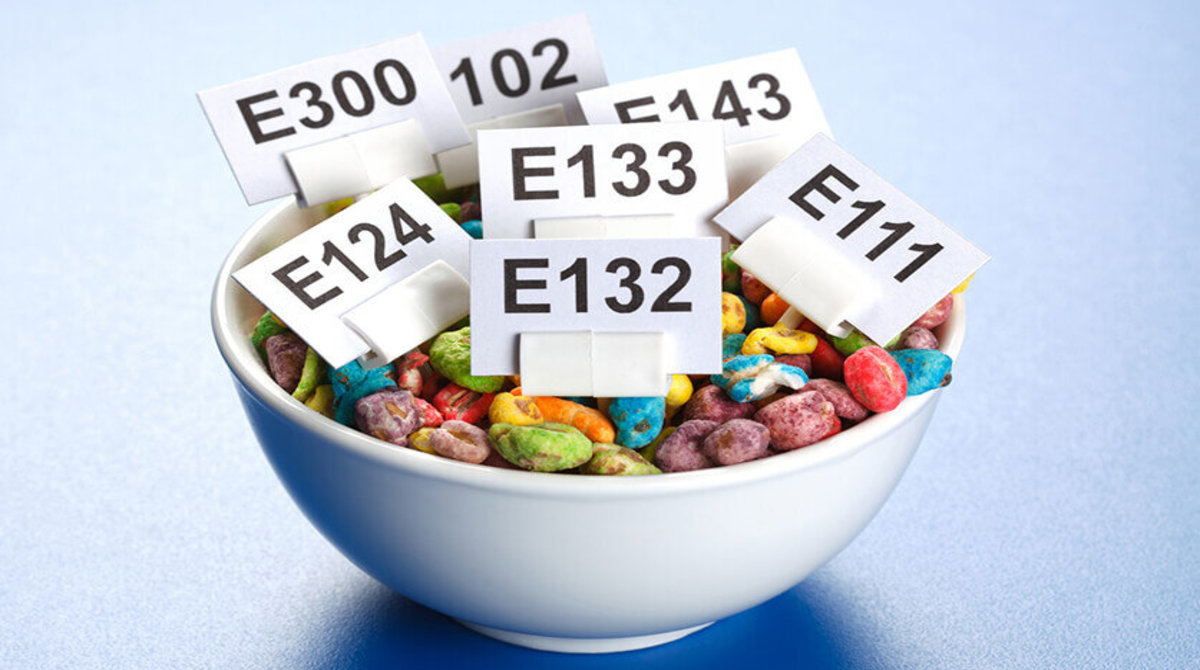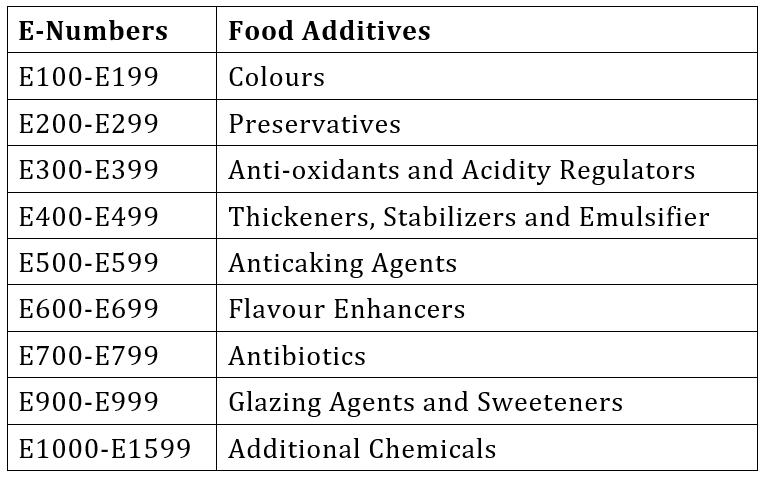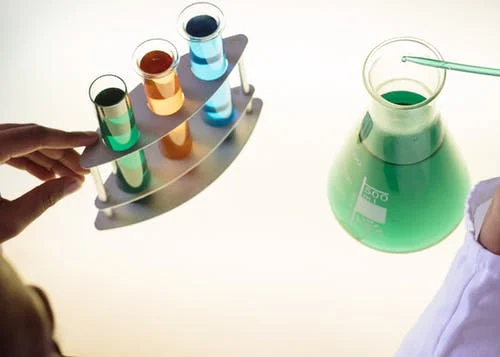What Are The Types Of Food Additives And Their Classes?
July 20, 2022

Urbanization has escalated the development of food and great technologies for the preservation and transformation of foods. Food additives are one of the best technologies developed to procure quality and sustain the attributes of food. The reliability of processed food has made food additives a part of our daily lives since the food we consume could not be consumed or manufactured without the use of food additives. On the other hand, there is a controversial issue on the incorporation of additives in food products as they tend to have negative health impacts on humans. Hence, National authorities in all countries determine the safety of additives prior to use.
JECFA (Joint Expert Committee on Food Additives) an international body run jointly by WHO and FAO determines the safety and standards for the maximum level of food additives to be used in food. After evaluation by the experts through scientific discipline, JECFA specifies the maximum permitted use level of food additives which is recorded in the Codex General Standard of Food Additives.
What are Food Additives?
According to Codex, a food additive is defined as “ Any substance which is not normally consumed as a food, nor is it used as a basic food ingredient, having a nutritional value or not and whose intentional addition to the food for technological purposes in its manufacturing, processing, preparation, processing, packaging, packaging, transport or storage phases, results or can reasonably be expected to result in itself or its by-products in a component of the food or an element that affects its characteristics.” The term does not include contaminants or substances added to food for maintaining or improving its nutritive value.
In general terms, a Food additive is any non-nutritional substance that is added to food with the purpose of achieving the desired end product along with the aim to improve and preserve its taste, texture, colour, appearance and shelf life without altering the nutritional value of the food. The Vitamins, Minerals, herbs, spices, salt, yeast, hops, and starter cultures are excluded to be used as food additives as stated in the FSSAI manual on food additives.
Food additives can be obtained from natural sources such as Ascorbic acid (Vitamin C) [ E300] which is extracted from a citrus fruit and Lecithin [E322] which is extracted from an egg yolk.
Food additives are also chemically synthesized, in laboratories. Such synthesized additives are not found in nature such as Synthetic colour like Sunset Yellow [E110] or they are made chemically identical to the natural additives also known as Nature Identical substances.

E- Numbers (International Numbering System) for Food Additives
The Additives which are proclaimed to be safe for usage as per Codex are given ‘E- numbers’. These E-numbers specify the identity of a particular additive, which can be later used for labelling of pre-packaged processed food. The Identification number or E- number consists of three or four digits such as 100 for Curcumin (Colour) and 1000 for Cholic acid (Emulsifier). Sometimes the number is accompanied by an alphabet such as 150a which is given for Caramel –I (colour), 150b for Caramel – II.

Types of Food Additives
The types of food additives help the manufacturer to synthesize and understand the type of additives that could perform specific technological functions in the desired product. The types of food additives are also based on the origin of additives (natural and synthetic).
A. Additives added to improve the quality of food
1. Colouring agents
The natural colour of the food is often shed out due to processing, hence the colouring agents or dyes are added to restore or improve the colour of the final food product in order to make it appealing to the consumers.
Food colouring agents are a type of food additive and are classified further as Natural colours (extracted from food) and Synthetic colours (Chemically synthesized in laboratories).
Example: Tartrazine [E102] A synthetic yellow colour used in orange drinks, custard powder, soup and sauces. Curcumin [E100] is a natural yellow colour obtained from turmeric.
2. Flavouring agents
Flavours and flavouring agents/enhancers are substances used to enhance a characteristic flavour or impart a specific flavour to the food. Flavouring agents are found to be natural, synthetic, or nature identical forms used in trace amounts which are collectively declared as ‘natural flavour’ or ‘artificial flavour’ or ‘nature identical flavour’. The most extensively used flavours are Vanillin used in ice-creams and confectionery food products, and Monosodium glutamate used in soups, and sauces [E621].
Sweeteners are also used as flavouring agents to mimic flavour or impart sweet taste which is similar to common sugar. Sucrose is the main sweetener which is commonly used in the food industry. Natural and Synthetic (Chemically derived) sweeteners are often added as a substitute for common sugar like Xylitol [E967] and Aspartame [E951], Maltitol and Maltitol syrup [E965], Sucralose [E955], etc.
3. Texturing agents
Emulsifiers - Emulsifiers are another type of food additive which help to stabilize a homogenous mixture of two or more non-miscible phases. Example Lecithin [322] an emulsifier is added to Mayonnaise which is an emulsion of water in oil and in Salad dressing, Sauces, Ice-creams, etc.
Thickeners Stabilizers - Thickeners are used to increase the viscosity of the food.
While the Stabilizers are used to maintain the dispersion of emulsion of Non- miscible food. They are usually derived from sea weeds such as Alginates, Carrageenan and their salts. They are used in products of high viscosity such as Jam, jelly, malted milk and sauces and soups.
Examples- Agar-agar [E-406] which is added to Jam to give a specific firm texture.
4. Bleaching and Maturing Agents
These Substances are oxidizing agents which improve the baking quality of food. They are added to freshly milled flours which have a tinge of yellow colour which is changed into grey colour after baking. Hence, Bleaching and Maturing agents help to resolve this discoloration and also give volume to the baked products. Example: Sodium Metabisulphite [E223] is added to refined flour used for baking.
5. Anticaking Agents
This type of food additive help to avoid lumping in the food product. They are mostly used in powdered or granulated food products such as milk powder, protein powders, spice blends, health drinks, etc. Anticaking agents like Magnesium Silicate[E553], Calcium Silicate[E552], Cellulose[E460], etc. are used.
6. Acidity Regulators
Acidity regulators help to stabilize the pH, and alter the acidity or alkalinity of the food product. An Acid Such as Citric acid[E330], Tartaric acid[E334], Sodium phosphates [339} etc, are used along with their Antioxidant properties.

B. Additives added to increase shelf life (Preservatives)
Certain food additives also hinder food deterioration caused by microbial reactions, enzymes or chemical reactions and are classified as Preservatives. Hence they are an indispensable part of the food industry since they help to maintain the shelf life of the food products. The use of preservatives is governed strictly since they impose negative health impacts on humans. Some Natural preservatives are a much more acceptable alternative to Synthetic or Chemical Preservatives. Natural preservatives but they impart undesirable taste in the products. Hence the use of synthetic preservatives is governed by levels of use in food products. The Subclasses of preservatives include-
1. Anti – Microbial agents
They are added to food to avoid Microbial spoilage. Anti-microbial agents such as Sorbic acid [E200] are used to avoid yeast and fungi which causes spoilage in baked products. Sodium Metabisulphite [E223] and Sulphur di-oxides are used extensively in food products such as fruit pulp, juices and dried fruits.
2. Anti-oxidants
Anti-oxidants are used to prevent rancidity which gives off flavour and odour to food due to oxidative spoilage of oil and fatty foods. The Commercial fats and fatty foods such as butter, essential oils, cake-mixes, crisps, etc. include permitted anti-oxidants such as Butylated Hydroxyanisole [E320], and Butylated Hydroxytoluene [E321], Lecithin [322], etc.
Conclusion
Enhancing the attributes of the food product to make it more appealing and sustainable with the addition of food additives is an ancient concept. In the modern world, processed food is higher in demand which involves the growing use of food additives of chemical origin, which could impose detrimental health effects. Hence, while using food additives it is important for the manufacturer to check the guidelines of the authorities and relevant regulations should be taken into consideration. Although adding these food additives help in bringing a plethora of innovative and value-added products, it is of prime importance to see the justified usage and the levels of food additives in which they are used.
Also Read - What Are The Key Requirements For Declaration Of Ingredient Lists?
Get Regulatory Compliant Food Labels in under 5 Minutes!
References :
1. Food Safety and Standards Authority of India (FSSAI). Manual of Methods of analysis of food additives. 2012. Retrieved from FOOD ADDITIVES.pdf (fssai.gov.in)
2. Codex Alimentarius Commission. Class names and the international numbering system for food additives. CXG 36-1989 Retrieved from http://www.fao.org/tempref/codex/Meetings/CCFAC/ccfac31/INS_e.pdf4
3. World Health Organization (WHO). Joint FAO/WHO Expert Committee on Food Additives (JECFA). Retrieved from WHO | Joint FAO/WHO Expert Committee on Food Additives (JECFA)
4. Spencer, M. (1974). Food additives. Postgraduate medical journal, 50(588), 620. Retrieved from Food additives (nih.gov)

Rashida Vapiwala (Founder at LabelBlind®, Food Label Specialist, Ph.D (Food Science and Nutrition))
Rashida is passionate about solving problems for the food industry using technology. She loves creating tech-led solutions in the space of Nutrition.
